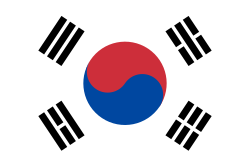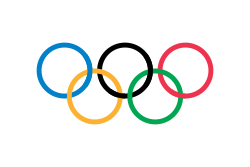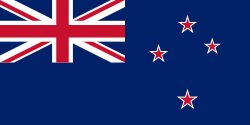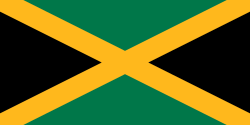Herrarnas skeleton vid olympiska vinterspelen 2018
| Skeleton Herrar | |||
| Information | |||
|---|---|---|---|
| Datum | 15-16 februari 2018 | ||
| Lokal tid | 11:15 (final) (UTC+9) | ||
| Deltagare | 30 idrottare från 20 nationer | ||
| Anläggning | Alpensia isbanecenter | ||
| Regerande mästare | |||
| |||
| |||
| |||
Herrarnas skeleton vid olympiska vinterspelen 2018 hölls i anläggningen Alpensia isbanecenter i Pyeongchang den 15 och 16 februari 2018. Tävlingen bestod av totalt fyra åk. De två första åken kördes den 15 och de två sista den 16. Medaljerna tilldelades de tre åkarna med den bästa sammanlagda tiden.[1]
Medaljörer
| Gren | Guld | Silver | Brons |
| Skeleton[1] |
Schema
| Datum | Tid | Omgång |
|---|---|---|
| 15 februari | 10:00 | åk 1 |
| 11:30 | åk 2 | |
| 16 februari | 9:30 | åk 3 |
| 11:15 | åk 4 |
Resultat
| Pl.[1] | Nr | Idrottare | Nation | Åk 1 | Åk 2 | Åk 3 | Åk 4 | Totalt | TM |
|---|---|---|---|---|---|---|---|---|---|
| 6 | Yun Sung-bin | 50,28 | 50,07 | 50,18 | 50,02 | 3.20,55 | – | ||
| 10 | Nikita Tregubov | 50,59 | 50,50 | 50,53 | 50,56 | 3.22,18 | +1,63 | ||
| 16 | Dominic Parsons | 50,85 | 50,41 | 50,33 | 50,61 | 3.22,20 | +1,65 | ||
| 4 | 9 | Martins Dukurs | 50,85 | 50,38 | 50,32 | 50,76 | 3.22,31 | +1,76 | |
| 5 | 8 | Tomass Dukurs | 50,88 | 50,58 | 50,65 | 50,63 | 3.22,74 | +2,19 | |
| 6 | 23 | Kim Ji-soo | 50,80 | 50,86 | 50,51 | 50,81 | 3.22,98 | +2,43 | |
| 7 | 7 | Axel Jungk | 50,77 | 51,01 | 50,83 | 50,99 | 3.23,60 | +3,05 | |
| 8 | 11 | Christopher Grotheer | 51,05 | 51,06 | 51,01 | 50,93 | 3.24,05 | +3,50 | |
| 9 | 12 | Alexander Gassner | 51,05 | 51,08 | 51,04 | 50,93 | 3.24,10 | +3,55 | |
| 10 | 21 | Jerry Rice | 51,06 | 51,15 | 51,04 | 50,99 | 3.24,24 | +3,69 | |
| 11 | 13 | Matthew Antoine | 51,16 | 50,98 | 50,91 | 51,34 | 3.24,39 | +3,84 | |
| 12 | 26 | Vladyslav Heraskevytj | 51,26 | 51,16 | 51,21 | 50,85 | 3.24,47 | +3,92 | |
| 13 | 24 | Geng Wenqiang | 51,51 | 50,87 | 51,18 | 51,09 | 3.24,65 | +4,10 | |
| 14 | 20 | Rhys Thornbury | 50,90 | 51,03 | 50,65 | 52,14 | 3.24,72 | +4,17 | |
| 15 | 17 | Vladislav Martjenkov | 51,27 | 51,49 | 51,05 | 51,37 | 3.25,18 | +4,63 | |
| 16 | 18 | John Daly | 51,23 | 51,15 | 51,33 | 51,65 | 3.25,35 | +4,80 | |
| 17 | 19 | Kevin Boyer | 51,46 | 51,24 | 51,14 | 51,56 | 3.25,40 | +4,85 | |
| 18 | 14 | Matthias Guggenberger | 51,38 | 51,29 | 51,81 | 51,25 | 3.25,73 | +5,18 | |
| 19 | 27 | John Farrow | 51,64 | 51,31 | 51,40 | 51,53 | 3.25,88 | +5,33 | |
| 20 | 3 | Alexander Henning Hanssen | 51,44 | 51,51 | 51,37 | 51,57 | 3.25,89 | +5,34 | |
| 21 | 15 | Dave Greszczyszyn | 51,73 | 51,31 | 51,57 | Gick inte vidare | 2.34,61 | N/A | |
| 22 | 25 | Hiroatsu Takahashi | 52,00 | 51,50 | 51,19 | 2.34,69 | |||
| 23 | 4 | Ander Mirambell | 51,64 | 52,06 | 51,59 | 2.35,29 | |||
| 24 | 2 | Dorin Dumitru Velicu | 51,91 | 51,51 | 52,02 | 2.35,40 | |||
| 25 | 22 | Barrett Martineau | 51,94 | 51,76 | 51,70 | 2.35,44 | |||
| 26 | 28 | Katsuyuki Miyajima | 51,63 | 52,15 | 51,80 | 2.35,58 | |||
| 27 | 29 | Joseph Luke Cecchini | 51,88 | 51,80 | 51,96 | 2.35,64 | |||
| 28 | 30 | Adam Edelman | 52,48 | 52,43 | 52,35 | 2.37,26 | |||
| 29 | 1 | Anthony Watson | 53,13 | 54,04 | 53,35 | 2.40,52 | |||
| 30 | 5 | Akwasi Frimpong | 53,97 | 54,46 | 53,69 | 2.42,12 |
Källor
- ^ [a b c] Official Results Book: Skeleton. Arkiverad 28 februari 2018 hämtat från the Wayback Machine. Läst 18 februari 2018.
- ^ Skeleton - Daily Schedule. Arkiverad 18 februari 2018 hämtat från the Wayback Machine. pyeongchang2018.com. Läst 18 februari 2018.
| ||||||||
Media som används på denna webbplats
An icon that represents a gold medal
An icon that represents a silver medal
Olympic Movement flag
Proportions 2:3, created 1913, adopted 1914, first used 1920.
- Colors as per http://fairspielen.de/wp-content/uploads/2015/09/Annexe-3-Olympism_and_the_Olympic_Symbol_-_Principles_and_Usages_Guide-1.pdf
- blue: PMS 3005C
- yellow: PMS 137C
- black: PMS 426C
- green: PMS 355C
- red: PMS 192C
- Dimensions of the rings taken from http://fairspielen.de/wp-content/uploads/2015/09/Annexe-3-Olympism_and_the_Olympic_Symbol_-_Principles_and_Usages_Guide-1.pdf
An icon that represents a bronze medal
Black&white version of Image:Olympic Rings.svg to use in lists where the colored version is too eye-catching
Kanadas flagga, införd 1965; denna version med Pantone‐nyanser. Nuvarande utformning ersatte den tidigare kanadensiska Red Ensign.
Flag of Israel. Shows a Magen David (“Shield of David”) between two stripes. The Shield of David is a traditional Jewish symbol. The stripes symbolize a Jewish prayer shawl (tallit).
Flag of Jamaica. “The sunshine, the land is green, and the people are strong and bold” is the symbolism of the colours of the flag. GOLD represents the natural wealth and beauty of sunlight; GREEN represents hope and agricultural resources; BLACK represents the strength and creativity of the people. The original symbolism, however, was "Hardships there are, but the land is green, and the sun shineth", where BLACK represented the hardships being faced.
Pictograms of Olympic sports - Skeleton























